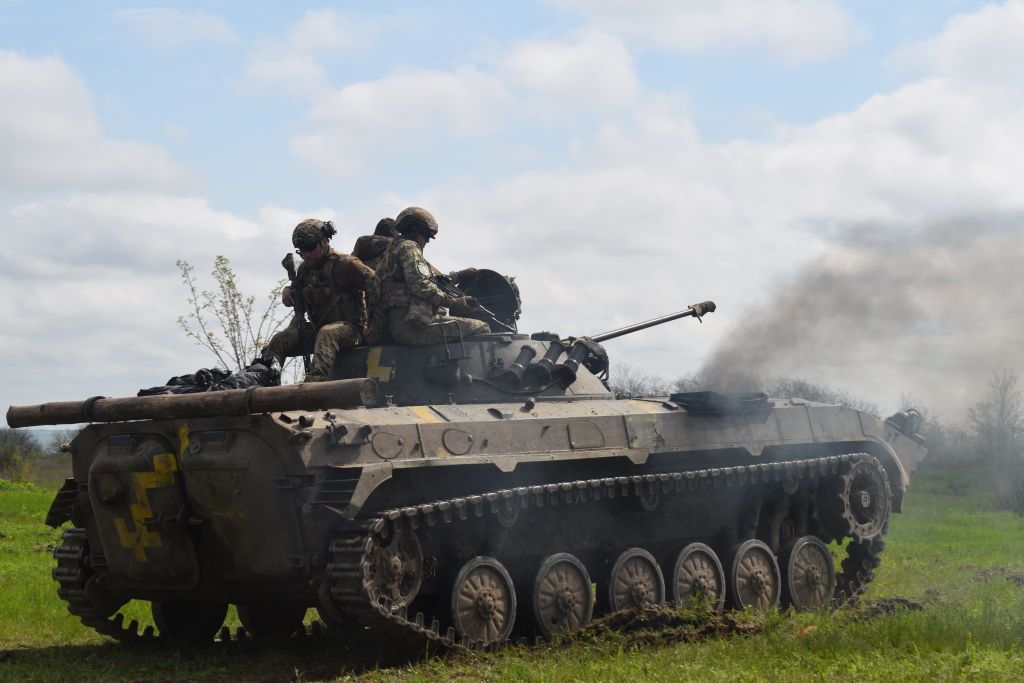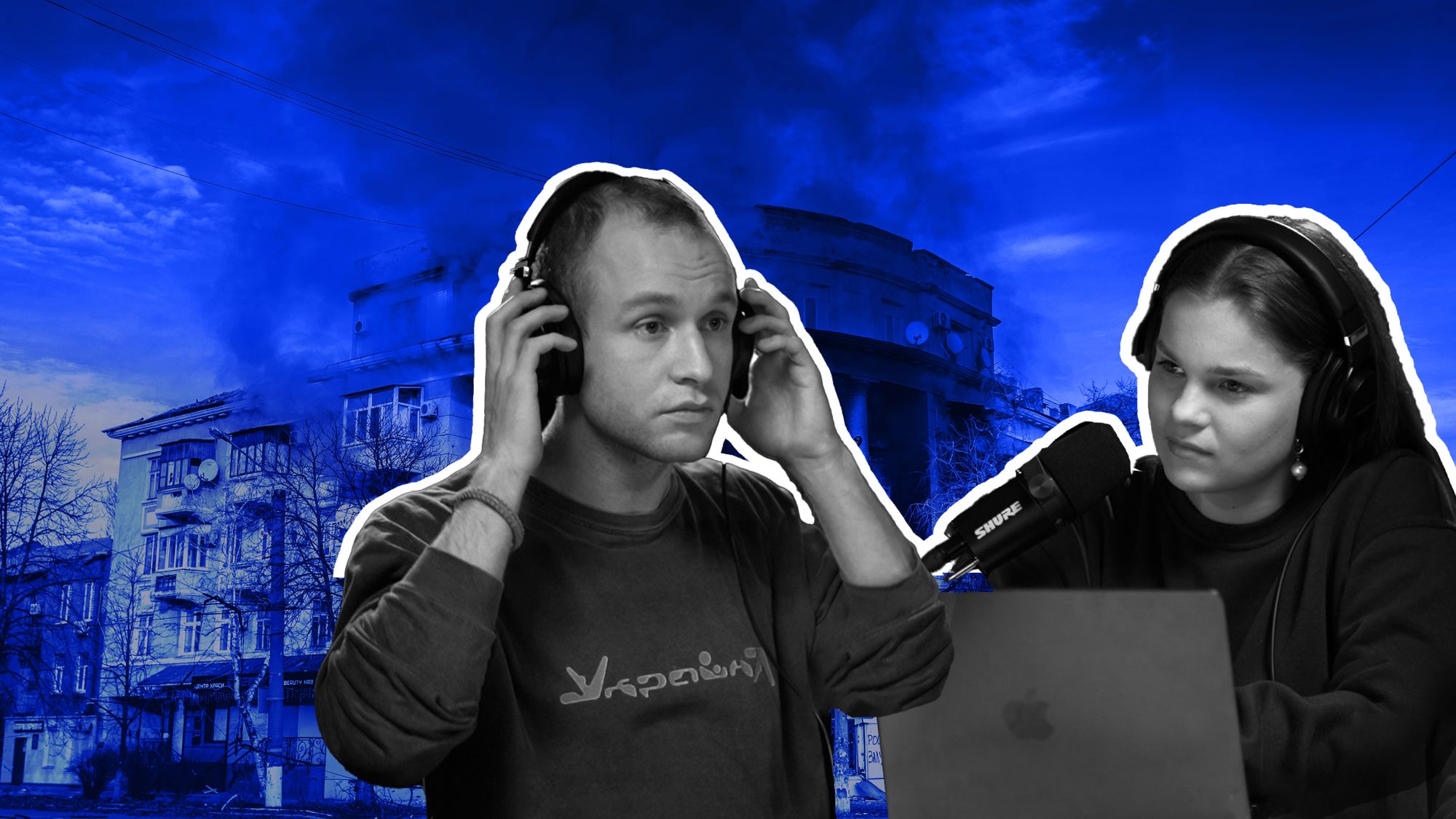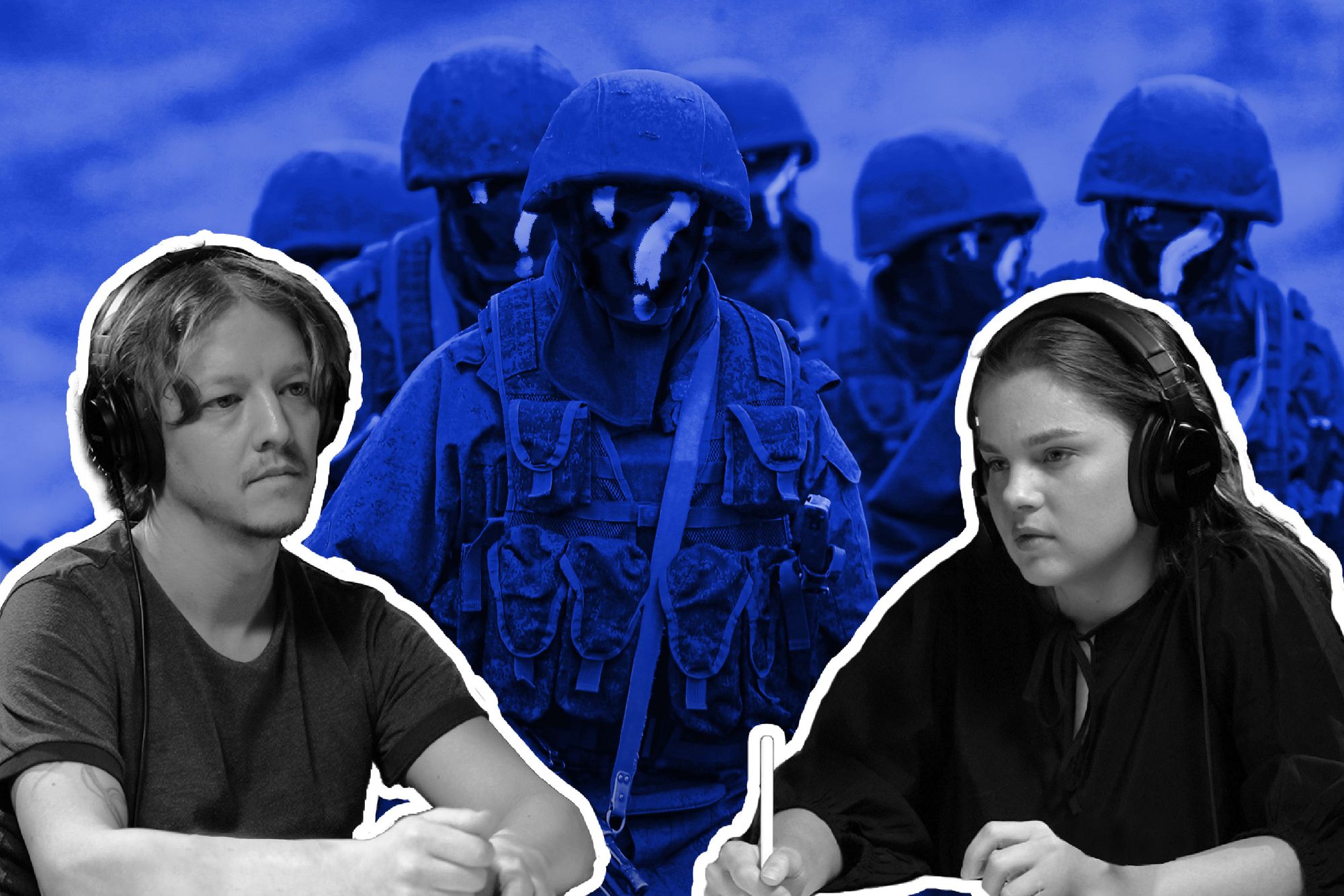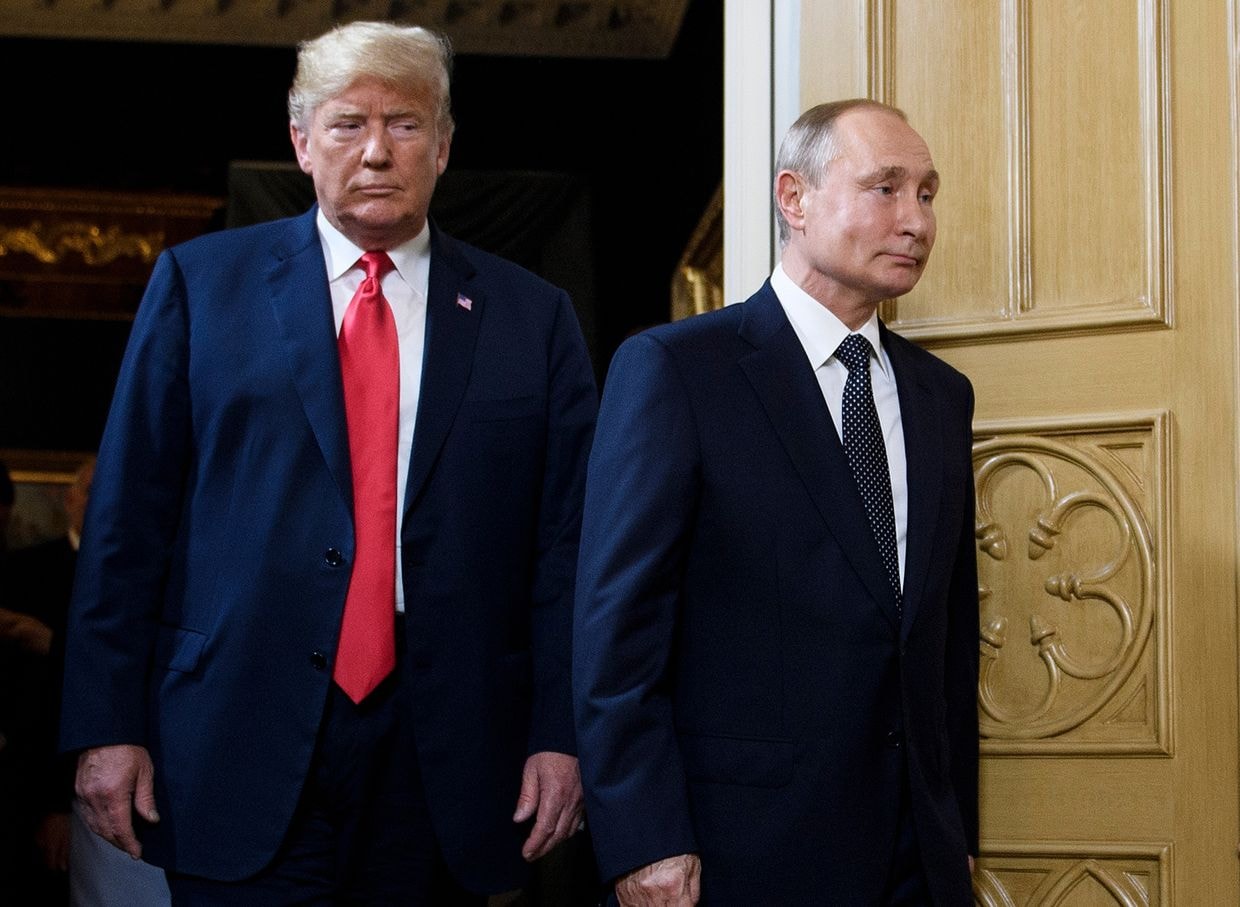Russia takes Bakhmut: Taking stock of the war’s bloodiest battle so far

CHASIV YAR, Donetsk Oblast – Ten months after Russia's assault on the once-flourishing city in Donetsk Oblast began, Bakhmut has now been effectively occupied by Russian troops.
This hasn’t been confirmed yet by Kyiv, but is evident based on both official statements and those made by soldiers on the ground to the Kyiv Independent.
On May 20, in his typical style, Wagner mercenary group boss Yevgeny Prigozhin stood in front of the ruins of Bakhmut's train station with his fighters to announce that Bakhmut had been taken, down to the last multi-story apartment buildings at the western entrance to the city.
Prigozhin's address was recorded in downtown Bakhmut, some 3 kilometers away from the city's western outskirts where the fighting is ongoing.
The General Staff and President Volodymyr Zelensky's spokesman denied Prigozhin's claims. In January, Ukrainian officials denied Russia occupied the nearby town of Soledar long after it was lost.

However, Ukraine's Defense Ministry officials acknowledge that Ukrainian troops were pushed out of the last high-rise buildings and are now defending positions in the low-density housing area at the outskirts of the city.
Ukrainian soldiers fighting around Bakhmut told the Kyiv Independent that battles on the outskirts of the city are still ongoing, but the Ukrainian army has indeed lost control of the last streets of multi-story buildings inside city limits.
In comments to the Kyiv Independent on May 21, Serhii Cherevatyi, spokesman for the Eastern Operational Command, confirmed that the Ukrainian troops retain the positions and fortifications in the southwestern part of the city near the destroyed MiG-17 aircraft monument.
Ukrainian troops are still able to approach the town, he said, but due to the intensity of the Russian army's artillery, the movement of equipment and vehicles to positions is complicated.
Successful Ukrainian counterattacks to the north and south of Bakhmut began on May 9 and are ongoing but were ultimately not enough to stop Russia's final advance through the last streets of the city.
"I still have my units there (in Bakhmut). Yes, there are counterattacks, and in some areas there is success," the commander of a battalion still fighting around Bakhmut under the 93rd Mechanized Brigade, who chose to be identified only by his call sign "Menthol" for security reasons, told the Kyiv Independent on May 20.
The commander stated that the main problem is the intensity of Russian artillery, mortar, and tank fire, adding that shelling by the Russian army has not decreased despite Prigozhin's complaints about a lack of munitions.

Since the country-wide jubilation that swept Ukraine with the liberation of Kherson in November, the Battle of Bakhmut was the defining engagement of a darker new phase of the war that unfolded over winter.
Painfully high casualty rates among Ukrainian forces and widespread reports about units not receiving the resources and support needed proved a harsh reality check for a nation which had gotten used to cities being liberated from Russian forces, not falling into occupation.
Grinding on through winter and spring, the Battle of Bakhmut showed the world a dark return to a kind of warfare that hasn’t been seen in decades.
Casualty figures run into the tens of thousands on each, even at their lowest estimates, likely making the battle the bloodiest single military engagement of the century and potentially since World War II.
Above all, the story of how Ukraine held Bakhmut for so long has been yet another episode of immeasurable sacrifice, a high price paid to bleed out Russia's offensive potential and improve the odds of a much-anticipated Ukrainian counteroffensive that will likely decide the future course of the war.
Сlosing the pincers
Russia's slow advance on Bakhmut began back in July 2022, after the fall of nearby Lysychansk in Luhansk Oblast.
The siege on the city escalated in November, around the same time as Russian troops withdrew from the western bank of the Dnipro River in Kherson Oblast.
As the weather worsened and Ukraine reinforced its positions in and around Bakhmut with numerous brigades from elsewhere, estimated casualty figures on both sides began to rise.

Russia's progress in its relentless assaults on the city's outskirts was fruitless for months, but in the countryside on either flank of the city, January saw significant breakthroughs for Wagner troops.
In mid-January, Russian forces overran Soledar, 10 kilometers north of Bakhmut, cutting off a key road used by Ukrainian units.
Over the following weeks, Russian troops north of Bakhmut continued to inch forward, while the same took place on the city's southern flank with the loss of Klishchiivka village.
By early March, Russian forces had established fire control over all the remaining roads into Bakhmut, still under Ukrainian control, and overran the eastern half of the city up to the Bakhmutka River.
Yet, Ukrainian leadership made the decision to hold on to Bakhmut until the last possible moment.
Ukraine’s decision to stay
As the last roads came under fire in early March, rumors had begun to circle that in choosing to hold Bakhmut at increasing cost, President Zelensky was overruling Ukraine's military leadership which may have favored withdrawal.
Efforts were made to dispel this talk and show a united front, most notably through numerous visits made by Ground Forces Commander Oleksandr Syrskyi to the embattled city.
With Syrskyi's visits came a clearer public explanation of the decision to keep fighting for the city.
"The Russian occupiers threw the most prepared units of the Wagner mercenary group and other regular units of the Russian army to capture the city," the Ground Forces wrote on social media, explaining that holding Bakhmut provided the best opportunity to inflict massive casualties on these units.

Over March, while Ukrainian control over the roads held firm, Russian forces broke into the built-up areas north and south of the city, advancing block by block in brutal urban warfare.
Russia's progress slowed down at times, with Commander-in-Chief Valerii Zaluzhnyi claiming on March 25 that Ukrainian forces were managing to "stabilize" the situation in Bakhmut.
Despite that, Russian troops pushed forward. As the situation continued to worsen, Ukraine's leadership stood by their reasoning.
"As of today, our main task is to wear down the overwhelming forces of the enemy and inflict heavy losses on them," Syrskyi said in a statement on March 26.
"It will create the necessary conditions to help liberate Ukrainian land and speed up our victory."
In an unusual interview with the Associated Press on March 29, Zelensky, however, openly admitted the political motivation behind the decision.
Zelensky put forward that taking Bakhmut would give a much-needed morale boost for Russia and its allies while dampening hope among Ukraine's partners that a Ukrainian military victory in the war was achievable.
Most surprisingly, the president also said that defeat in Bakhmut would make Ukrainians "feel tired" and even push for a ceasefire.
"Our society will push me to reach a compromise with them," Zelensky said to AP.
Ukrainian troops kept hold of parts of the city for two more months.
The Wagner factor
The Kremlin-controlled Wagner Group was the key factor in Russia's successful push into Bakhmut.
Wagner began to bring tens of thousands of convicts from Russia's prisons into its ranks, including those convicted of rape and murder, what proved to be the group's main recruitment drive in late 2022.
Used in combination with the more professional and experienced Wagner units, the prisoners proved to be highly effective as an expendable assault force, creeping forward in squad-sized groups with little regard for their own life.
In the words of many Ukrainian units working in the area, the nature of Russia's assault on Bakhmut proved more than ever that while Ukraine was losing its best people in the war, Russia was expending its worst.

Mid-spring, Wagner began to run out of steam as the group burned through its stocks of prisoners.
In April, having taken high losses, Wagner handed over the flanks of Bakhmut to the Russian army, focusing on the urban fight where the group's advances continued to slow down.
Prigozhin blamed his failures on the Russian Defense Ministry, whom he repeatedly accused of deliberately depriving Wagner of munitions.
He called out Russian Defense Minister Sergei Shoigu and Chief of the General Staff Valery Gerasimov, saying, "they (will) eventually answer for their villainous actions."
Despite constantly attacking Russian military leadership and threatening to withdraw from Bakhmut, Wagner group remained Russia's key attacking force until late May, with Ukrainian soldiers interviewed by the Kyiv Independent saying they didn't see a drop in Russian military activity inside the city.
Beyond the fortress
The turnoff to Chasiv Yar, 10 kilometers west of Bakhmut, is greeted by dusty clouds that cover vehicles and people alike.
The ground all over Ukraine is becoming drier every day, improving the conditions for offensive operations.
Clawing its way to the finish line in Bakhmut almost three months after most expected, Russia's capture of the ruined city is the only prize Moscow can claim from an incredibly costly winter/spring offensive campaign.
Other offensive pushes in Donetsk Oblast, near Vuhledar, Avdiivka, and Lyman, all reached an eventual standstill.
If Russia had taken Bakhmut earlier, when Wagner's stocks of assault troops were still healthy, there was a real threat that Russia could surge further in Donetsk Oblast.
As of late May, this threat has seemingly passed.

Ukraine's defense of Bakhmut has come at a significant cost, but Kyiv has achieved its aims without having to send in the fresh brigades or new Western equipment that is being kept in reserve for the imminent counteroffensive.
In this way, the brigades defending Bakhmut have performed a crucial role in Ukraine's hopes to liberate the rest of its occupied territory.
In hellish urban warfare, they have taken on the full force of Wagner assaults and Russian artillery barrages all upon themselves, often without enough support, all to give Ukraine the best chance at making a crucial strategic breakthrough in the future.
At the end of his address, Prigozhin announced that on May 25, Wagner would withdraw from Bakhmut to its bases in the rear for "rest and recuperation" and that Wagner's positions would be, in turn, handed over to the regular military.
It wasn't the first time the Wagner boss told of plans to leave the city, but this time it was not a conditional threat, simply an announcement.
Wagner's mission to take Bakhmut was accomplished, he said, and Wagner would prepare to enter the fight if called upon at a later date.
With regular Russian units struggling to hold back Ukrainian counterattacks on the flanks of the city, it is unclear if the alleged withdrawal of Wagner from Bakhmut will provide Ukraine with the opportunity to strike back immediately in the city itself.
Kyiv is openly confident in its ability to turn the loss of Bakhmut into a Ukrainian victory.
"We continue to advance on the flanks in the suburbs of Bakhmut and are actually approaching the tactical encirclement of the city," said Syrskyi on May 21.
"Thanks to this, we will be able to control all high-rise buildings occupied by the enemy and gradually destroy them."
Note from the author:
Hi, this is Francis Farrell, cheers for reading this article. I have covered the post-war era's bloodiest battle since autumn, both from Kyiv and from the ground.
More than ever, my thoughts are with the soldiers who have taken part in the heroic defense of the city, and with civilians I met there, the fates of whom we may never found out. I hope and believe that this is not my last report on Bakhmut, but until then, our work continues. Please consider supporting our reporting.



















